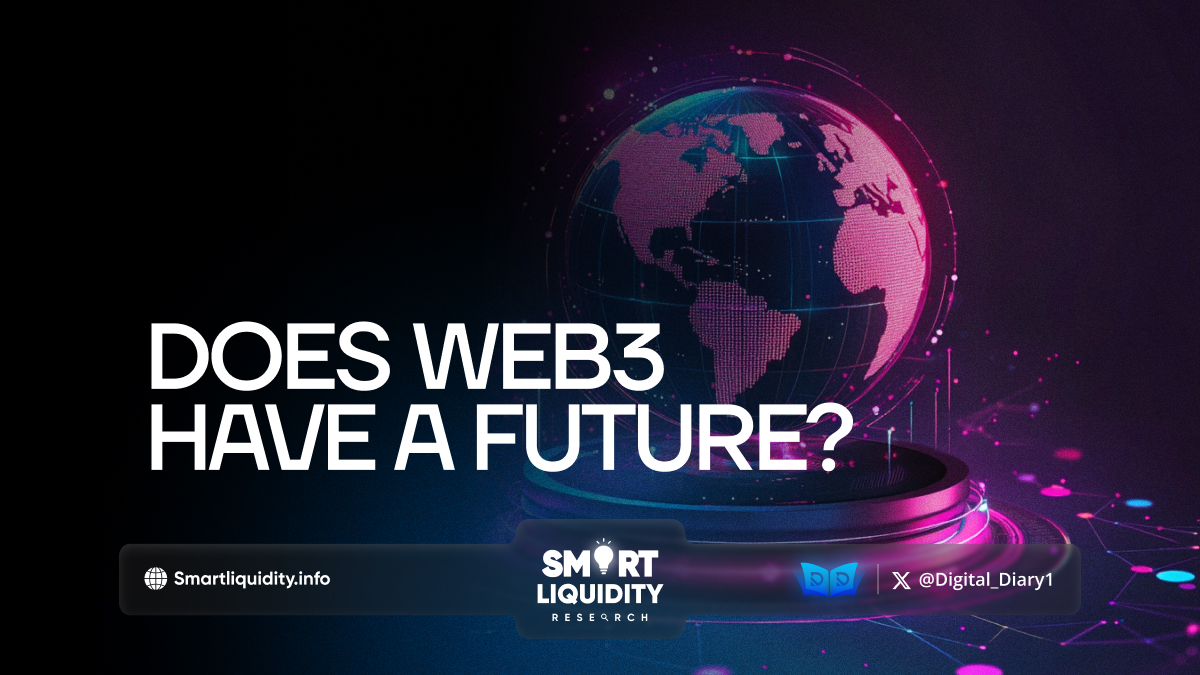Does Web3 Have a Future?


In recent years, the buzz around Web3 has surged, captivating tech enthusiasts, entrepreneurs, and investors alike. It promises to be a paradigm shift—a decentralized internet where users regain control of their data, digital assets, and online interactions. But amid the excitement, a crucial question lingers: Does Web3 really have a future?
The Vision Behind Web3
At its core, Web3 is a response to the problems of Web2, where tech giants like Google, Facebook, and Amazon dominate the landscape, accumulating vast amounts of data and controlling major aspects of our digital lives. Web3 envisions a decentralized world where blockchain technology allows users to own and manage their data, content, and digital identities. Imagine a world where users no longer need to rely on centralized intermediaries—be it for payments, communication, or even social media interactions.
This vision is ambitious, but can it truly reshape the internet as we know it?
The Pillars Supporting Web3
Several groundbreaking technologies form the foundation of Web3. Blockchain, cryptocurrency, decentralized finance (DeFi), non-fungible tokens (NFTs), and smart contracts are some of the key players driving this shift.
- Blockchain enables transparency and immutability, making trustless transactions possible without a central authority.
- Cryptocurrencies act as the native currency for Web3, fueling the decentralized economy.
- DeFi empowers users to access financial services without traditional banks, opening the door for a more inclusive and equitable financial system.
- NFTs introduce the concept of true ownership in the digital realm, allowing creators and collectors to monetize digital art, music, and even in-game assets.
- Smart contracts automate and enforce agreements, removing the need for intermediaries and reducing human error.
Each of these elements is revolutionary, but together they hold the potential to redefine how we engage with the internet.
The Challenges on the Road to Adoption
Despite its transformative potential, Web3 is far from reaching mainstream adoption. Several hurdles lie in the path of its widespread success.
- User Experience: One of the main criticisms of Web3 is its complexity. For the average user, interacting with blockchain applications or managing crypto wallets can be intimidating and confusing. Until the user experience becomes more intuitive and seamless, Web3’s full potential remains locked away.
- Scalability: Current blockchain technologies, like Ethereum, often struggle with scalability issues, leading to slow transactions and high fees. Until these systems can handle large volumes of users efficiently, they remain impractical for mass adoption.
- Regulatory Uncertainty: Governments worldwide are grappling with how to regulate Web3 technologies, especially cryptocurrency. Unclear or overly restrictive regulations could stifle innovation or prevent adoption in certain regions.
- Security Concerns: The decentralized nature of Web3 makes it a prime target for hackers and scammers. Without centralized authorities, users are responsible for their own security—meaning a lost private key can result in permanent loss of access to funds or data.
- Energy Consumption: Many blockchain networks, particularly those that rely on proof-of-work consensus mechanisms, are criticized for their massive energy consumption. The industry is working towards more eco-friendly solutions, but for now, it remains a significant concern.
The Innovators Driving Web3 Forward
Despite these challenges, many companies and projects are pushing Web3 innovation to new heights. Projects like Ethereum 2.0 aim to address scalability and energy concerns, while decentralized applications (dApps) in gaming, finance, and social media are actively proving the real-world viability of the Web3 vision. Major corporations like Meta, Twitter, and Microsoft are also dabbling in decentralized technologies, signaling that Web3’s influence is being taken seriously by even the largest players in Web2.
Moreover, decentralized autonomous organizations (DAOs) are emerging as a new form of governance, where decisions are made collectively by token holders rather than a centralized authority. This radical shift in how organizations operate could be the key to a more democratized internet.
The Future of Web3: Will It Thrive or Fade Away?
So, does Web3 have a future? While the road to widespread adoption is fraught with challenges, the potential it holds is undeniable. If innovators can overcome scalability, user experience, and regulatory barriers, Web3 could indeed revolutionize the internet as we know it.
But Web3’s future hinges on more than just technological breakthroughs—it requires a shift in how people view and interact with the digital world. As users become more aware of the value of their data and the importance of decentralization, the demand for Web3 solutions may accelerate. This cultural shift, combined with continued innovation, could transform Web3 from a niche technology into the next era of the internet.
The road is long, and many questions remain unanswered, but one thing is clear: Web3 is not just a passing trend. Whether it evolves into the foundation of the next-generation internet or becomes a building block for something even greater, Web3 is carving out its place in the future.
Conclusion
Web3’s potential is immense, but its journey to realization is still in its early stages. The future of the decentralized internet depends on technological advancements, user adoption, and overcoming key challenges. As the world moves closer to a Web3 reality, it’s not just a matter of if it will have a future, but rather when that future will arrive.




